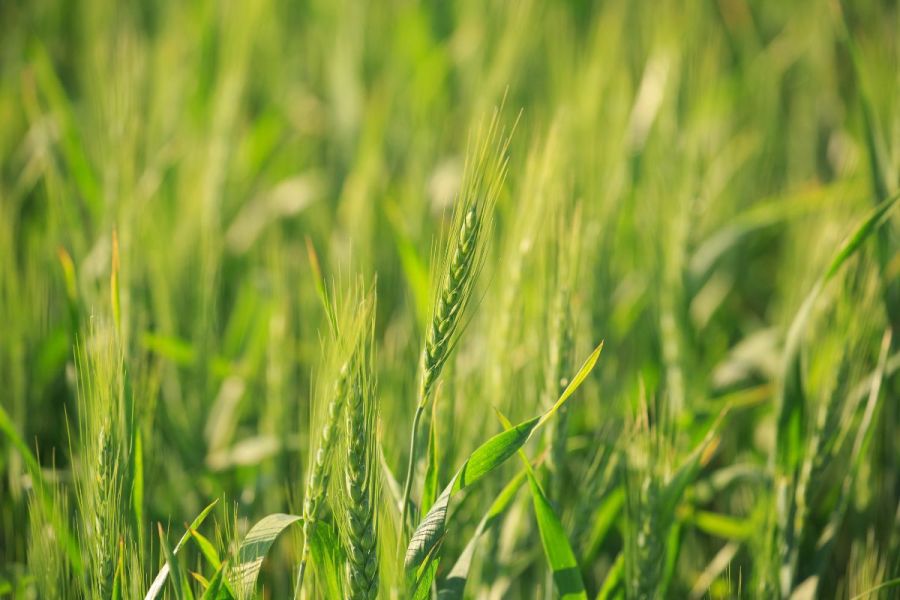Findings from new trials have shown that it’s possible to increase wheat yields, despite reduced nitrogen, when the right biostimulant is used… CPM finds out more.
“There’s potential at both T2 and T3 to increase yield.”
By Charlotte Cunningham
There’s no denying this season has been difficult for growers up and down the country, with an already lacklustre mood towards Harvest 2024, despite it being months before combines leave the shed…
As well as waterlogged crops drilled in the autumn, with the prolonged rainfall now continuing into the start of spring, applications of both crop protection and nutrition run the risk of being delayed – and compacted – all of which could significantly limit what’s left of the yield potential this year.
But it’s not all doom and gloom, and new research has highlighted how incorporating a biostimulant at key timings could help push wheat yields – even in situations of reduced nitrogen.
The product in question is YieldOn, which now falls into the Syngenta Biologicals portfolio following the acquisition of Valagro who previously marketed it. The company has been involved with biostimulants and crop nutrition from plant extracts for a number of years, explains Mike Garner, technical and sales manager. “By using the GeaPower research platform, we have been able to exploit the full potential of plant biostimulants to both to understand what they do at a genomic level and how that translates into in-field behaviour.”
Looking to the product itself, YieldOn is a combination of three natural plant extracts including seaweed, with the addition of manganese, zinc and molybdenum, developed through the aforementioned genomic technology, explains Mike. “It works by stimulating cell number and size in the developing grains as well as enhancing the movement of sugars and nutrients into the grain sites.”
Though the product’s claims have been proven in the field over numerous years, in an era of expensive inputs and pressure from an environmental perspective to reduce them, more recently the firm wanted to test YieldOn’s abilities in a reduced nitrogen scenario. “We started in 2018 and have conducted different trials on different crops every year to continually prove just how effective YieldOn is,” notes Mike.
The 2023 trials were carried out by independent contractors, Cropsure, at a site in Yorkshire and involved comparing two single applications of YieldOn to RGT Saki wheat at different timings – T2 and T3 – at two different nitrogen rates, 200kgN/ha and 180kgN/ha.
At each rate, the researchers examined the effect of YieldOn when applied at a rate of 2 l/ha. “The theory was this would enable us to have comparisons on the impact that both nitrogen rates and timings had on the efficacy of YieldOn,” says Mike.
The results showed a positive response at both timings, with T2 applications garnering a slightly better yield response, with an uplift of 0.6t/ha when a standard rate nitrogen programme was applied (see table). “When we reduced the nitrogen rate to 180kgN/ha, we still saw a worthwhile response in terms of yield uplift, but the differences between the timings was much more significant.”
Delving into the detail, under the reduced nitrogen programme, applying YieldOn at T2 gave a 0.48t/ha uplift, while at T3 this was reduced to an uplift of 0.27t/ha. “We’re not exactly sure why this was the case at the moment, but from this study, it’d suggest that targeting the T2 timing yields better results for growers,” notes Mike.
Last year’s trials showed that in the standard N plots (200 kg N/ha), yield improvements were statistically significant at the 5% level for both timings (T2 and T3). In the reduced N plots, (180 kg N/ha) yield improvements were also statistically significant at the 5% level for the T2 timing.
Looking back at previous seasons trials, it’s interesting to see that in some cases T3 gave similar or slightly higher yields than T2.
This better performance at that later timing echoes work carried out by Hutchinsons. As reported by CPM in May 2022, Hutchinsons’ Dick Neale recommended applying YieldOn between GS39-65 – though targeting between GS59-60 has had most advantageous effect in Hutchinsons’ own work. “This may not align with traditional spray timings, so it’s important to factor in when you might realistically make an application.”
Mike continues: “Thinking about the current season, when things do dry and warm up, workloads are likely to be heavy. So, if for whatever reason growers are unable to get on with YieldOn at T2, they have a second bite at the cherry at T3 which could be vital for squeezing every gramme of yield from crops this year.”
With crop prices looking perkier, there could be financial rewards to reap from extra yield this year. “Although the price has been a bit disappointing lately, there’s some evidence to suggest that futures prices have perked up a bit for the backend of this year – at least for new crop wheat – and there are indications of a slight recovery pricewise,” points out Mike. “With this largely being driven by the likelihood of a reduced supply of wheat, that extra uplift in yield which is possible with YieldOn could prove very welcome.”
Looking to the coming months, while for many crops are looking bleak and yield may be compromised, focus should be on minimising this as much as possible, concludes Mike. “It’s probably not going to be a year to skimp on chemistry – crops are going to require a lot of TLC this year, and while it’s not a silver bullet, YieldOn can complement this and help growers to squeeze out all they can in a tricky season.”
This article was taken from the latest issue of CPM. Read the article in full here.
For more articles like this, subscribe here.
Sign up for Crop Production Magazine’s FREE e-newsletter here.




